AI-900: Microsoft Certified Azure AI Fundamentals
Natural Language Processing NLP
NLP and Conversational AI in Azure
Azure offers a robust ecosystem of tools and services designed for natural language processing (NLP) and conversational AI. In this guide, we explore Azure’s capabilities organized into three primary categories: Language, Speech, and Translator services, helping you build intelligent and multilingual applications.
Language Services
Azure's Language Services enable applications to understand and process text effectively. Key capabilities include:
- Language Detection: Automatically identifies the language of the input text to seamlessly handle multilingual data.
- Key Phrase Extraction: Highlights the main topics by extracting significant words or phrases.
- Named Entity Detection: Recognizes and classifies essential entities such as names, locations, dates, and more.
- Sentiment Analysis and Opinion Mining: Analyzes the emotional tone of text, classifying sentiment as positive, negative, or neutral.
- Personal Information Detection: Detects sensitive data (e.g., names, addresses, identification numbers) to support data privacy.
- Summarization: Condenses lengthy content into its key points for quick understanding.
- Question Answering and Conversational Language Understanding: Empowers AI to comprehend user queries, making it ideal for chatbots and virtual assistants.
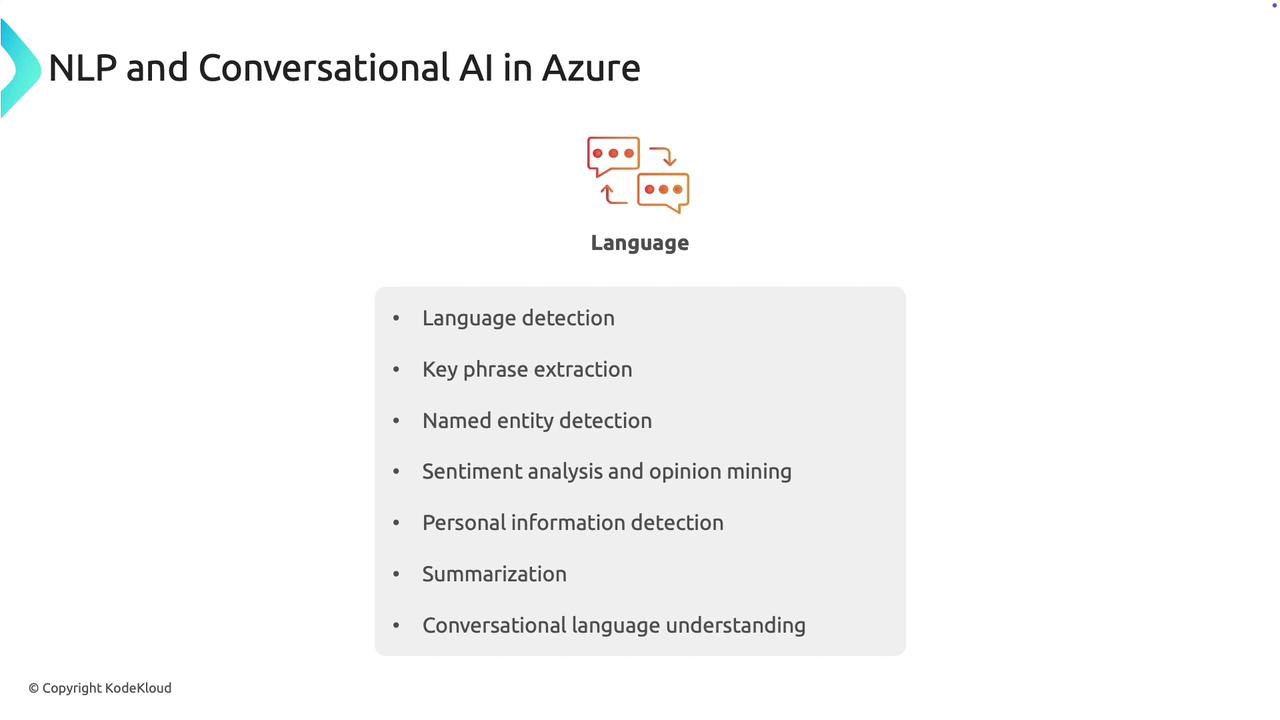
Speech Services
Azure’s Speech Services provide extensive capabilities to work with spoken language. These services include:
- Text-to-Speech: Converts written text into spoken words for applications that require audio output.
- Speech-to-Text: Transcribes spoken language into text, which is especially useful for voice input and dictation.
- Speech Translation: Delivers real-time translation of spoken language, enabling global communication.
- Speaker Identification: Differentiates between speakers to support personalization and enhance security.
- Language Identification in Audio: Detects the language spoken in audio, even when multiple languages are present.

Translator Services
Translator services in Azure enable seamless text translation across different languages. The main features are:
- Text Translation: Converts text between languages to bridge communication gaps.
- Document Translation: Translates entire documents while preserving the original formatting.
- Custom Translation: Adapts translation models to specific industry terminologies and phrases for more accurate results.
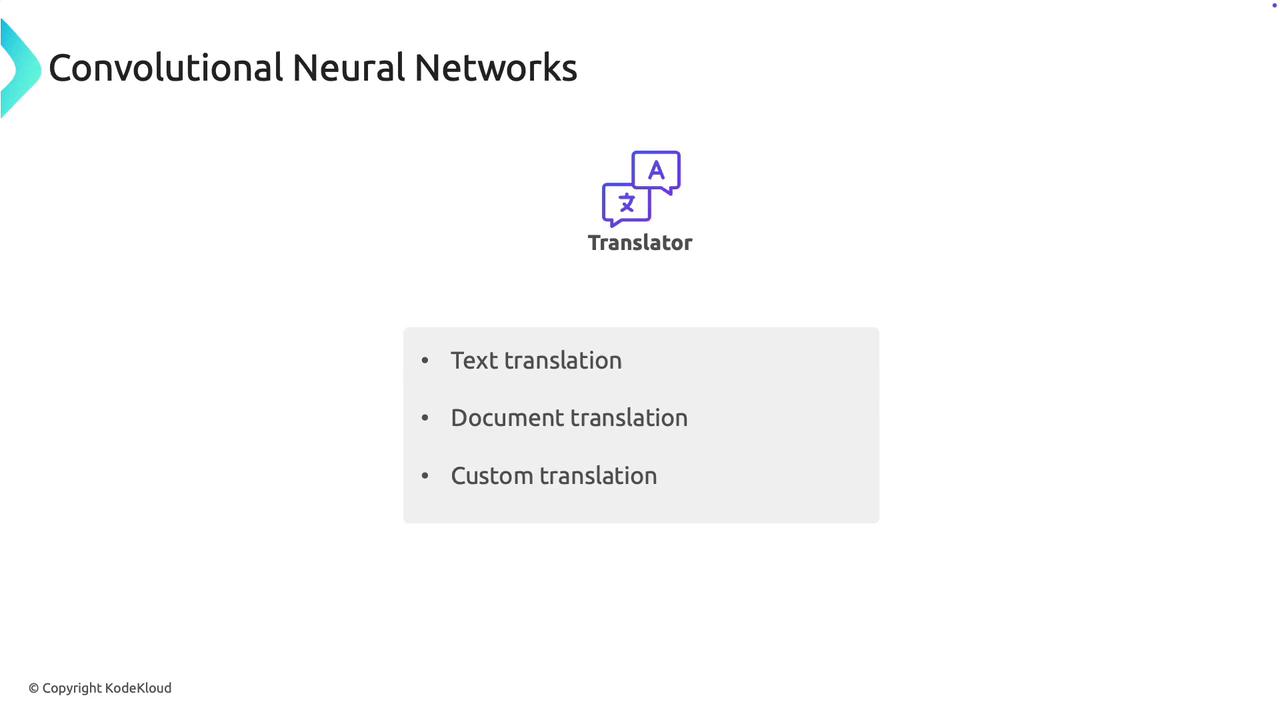
Summary of Services
Azure’s comprehensive suite of language, speech, and translator services empowers businesses to build applications that understand and interact in multiple languages—both written and spoken. This flexibility is perfect for creating chatbots, language analytics platforms, and multilingual communication systems. By leveraging these tools, you can automatically respond to customer sentiment, generate concise summaries, and implement a variety of AI-driven features.
Now that you have an overview of these capabilities, let’s dive into Azure AI Studio to put these services into practice.
Working with Azure AI Studio
Azure AI Studio provides a unified interface to access various AI services. Below is an overview of how to explore these functionalities.
Speech Capabilities
Voice Gallery: Choose from a selection of voices to serve as speakers for your projects.
Real-Time Speech-to-Text: Record audio and see it transcribed into text instantly. For example:
"Hello all, thank you for joining today."
This feature demonstrates efficient, real-time transcription.
Pronunciation Assessment: Evaluate your speech by comparing it against a provided script. This tool provides scores and error analysis to help improve pronunciation.
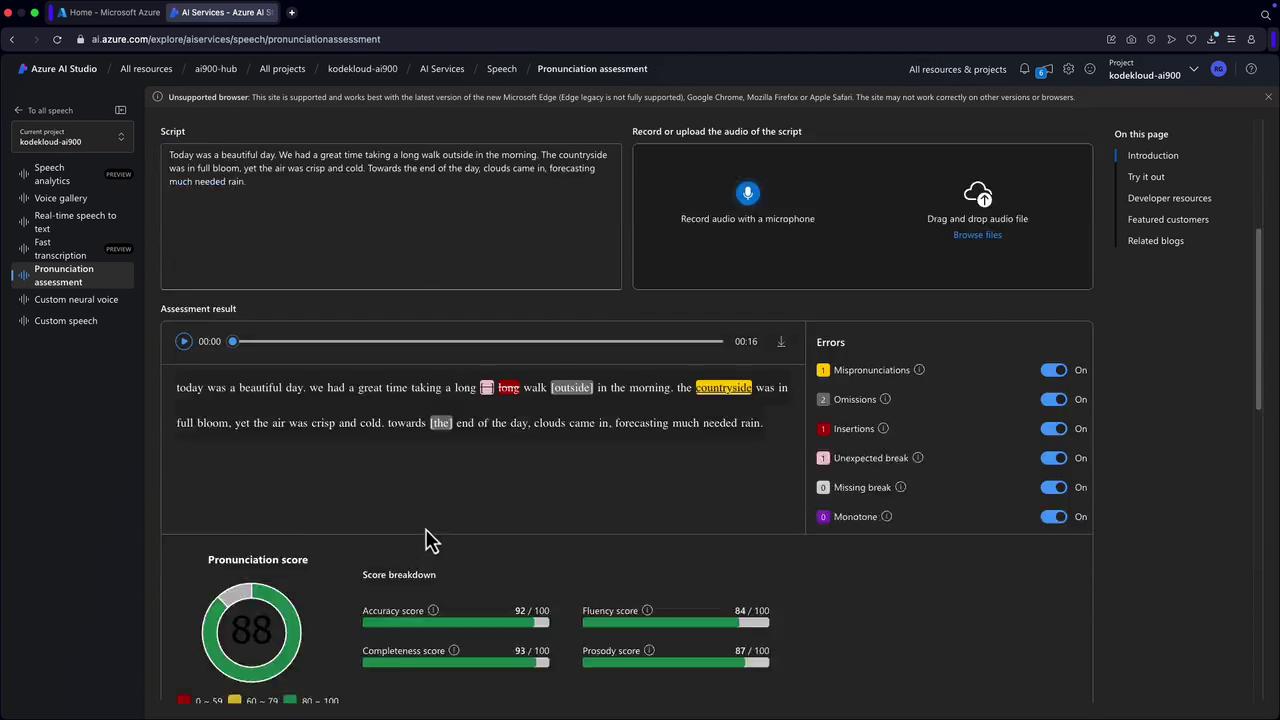
After recording a sample passage:
Today was a beautiful day. We had a great time taking a long walk outside in the morning. The countryside was in full bloom, yet the air was crisp and cold. Towards the end of the day, clouds came in, forecasting much-needed rain.
You can review your score and identify areas for improvement. For example, the following code snippet demonstrates how to initiate continuous pronunciation assessment:
public static async Task PronunciationAssessmentContinuousWithFile()Additional Speech Transcription: Quickly test audio and perform real-time transcription for various use cases, including live chat avatars and post-call transcription analytics.
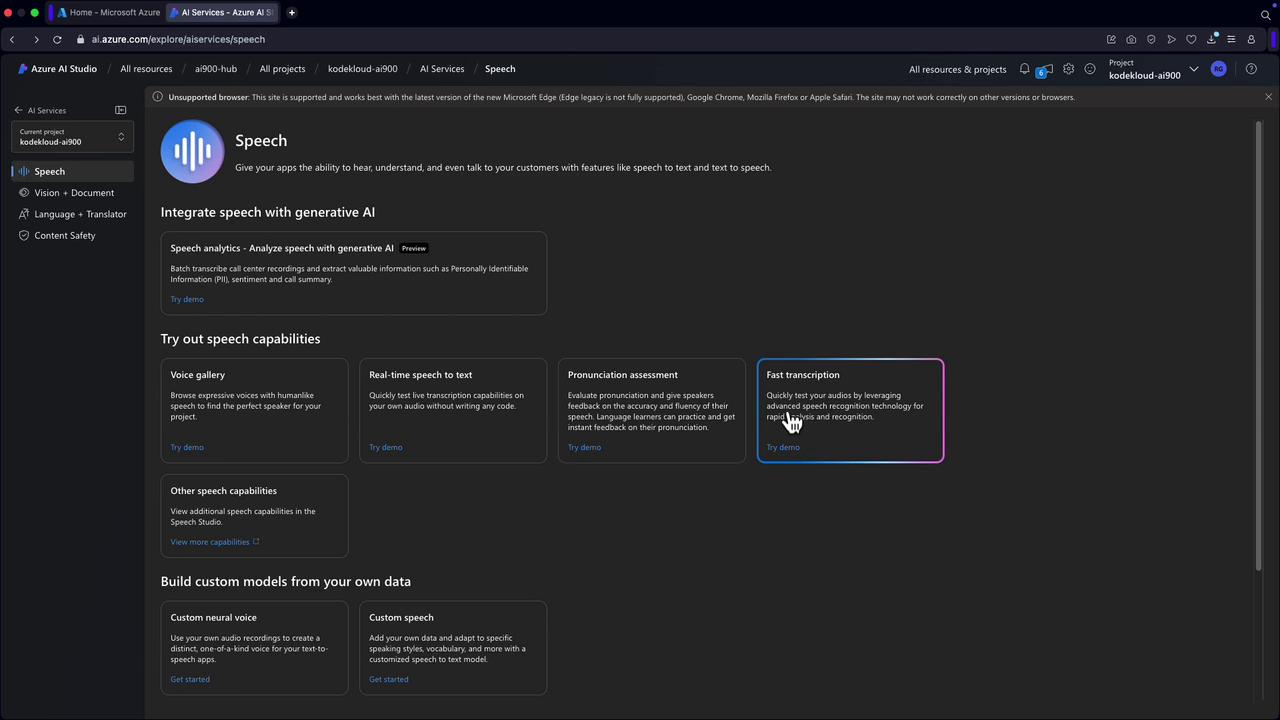
Further enhancements in Speech Studio include:

And additional options:
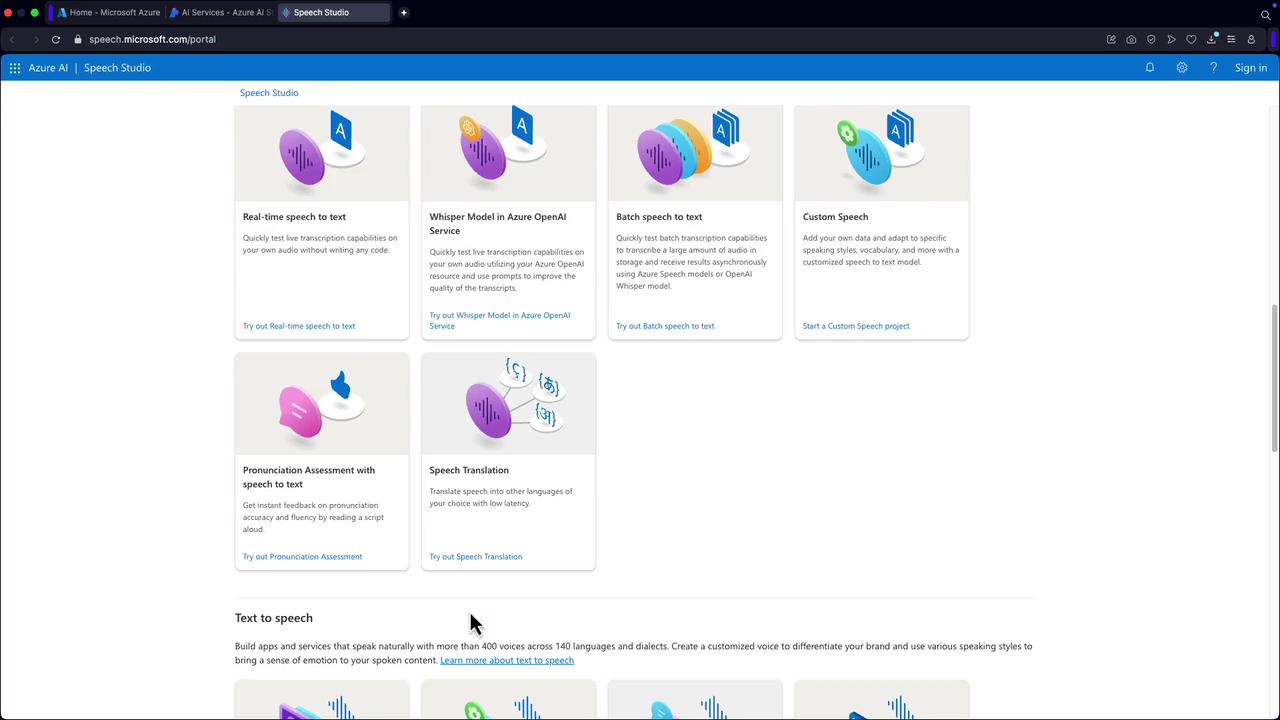
Text-to-Speech and Voice Assistant: Utilize these features to create engaging videos or develop voice-controlled applications.
Language and Translator Capabilities
Within Azure AI Studio, the Language and Translator section offers:
- Language Detection: Automatically identify the language of the input text.
- Document Translation: Convert documents to different languages while preserving formatting.
- Named Entity Extraction: Identify and extract key entities from text for further analysis.
Development tools for custom translator configurations are also available:
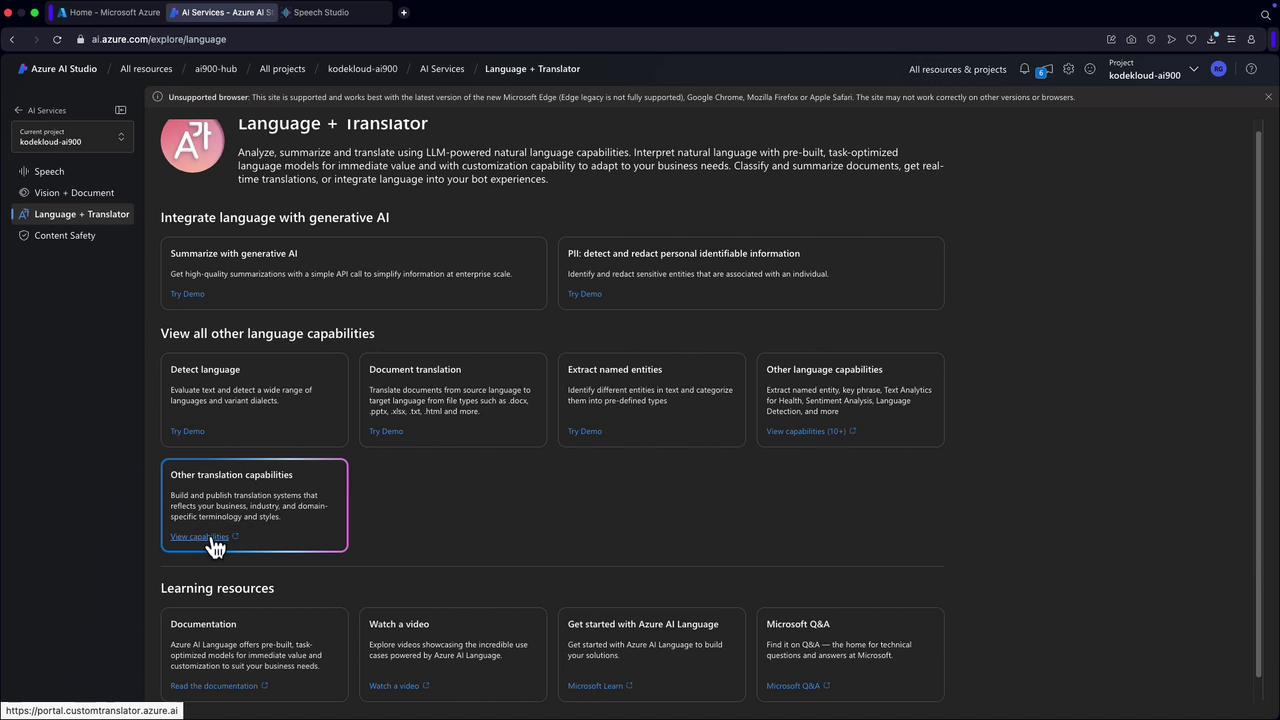
Additionally, the Language Studio supports various NLP services such as sentiment analysis, text classification, and conversational language understanding:
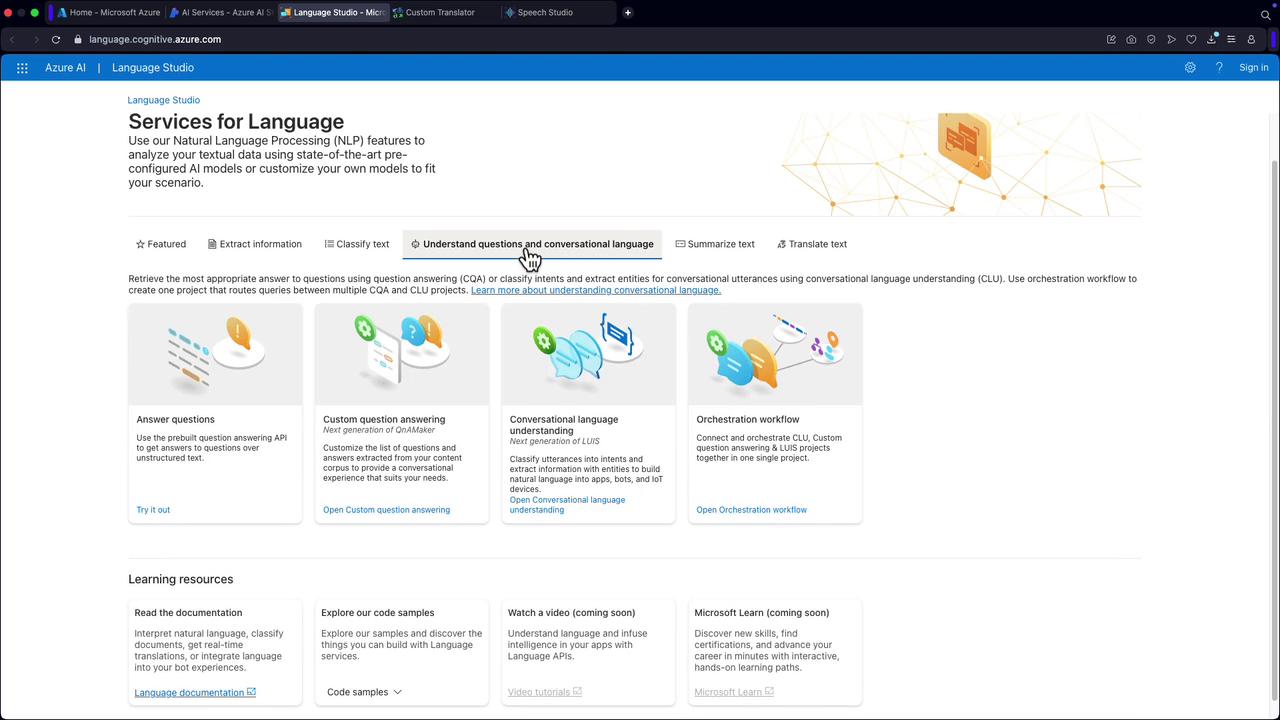
For example, social media posts can be analyzed to gauge customer sentiment:
- A post with a 96% positive sentiment may trigger a thank-you message.
- A negative review like "the cafeteria food is getting worse by the day" might register as 94% negative, prompting a customer support follow-up.
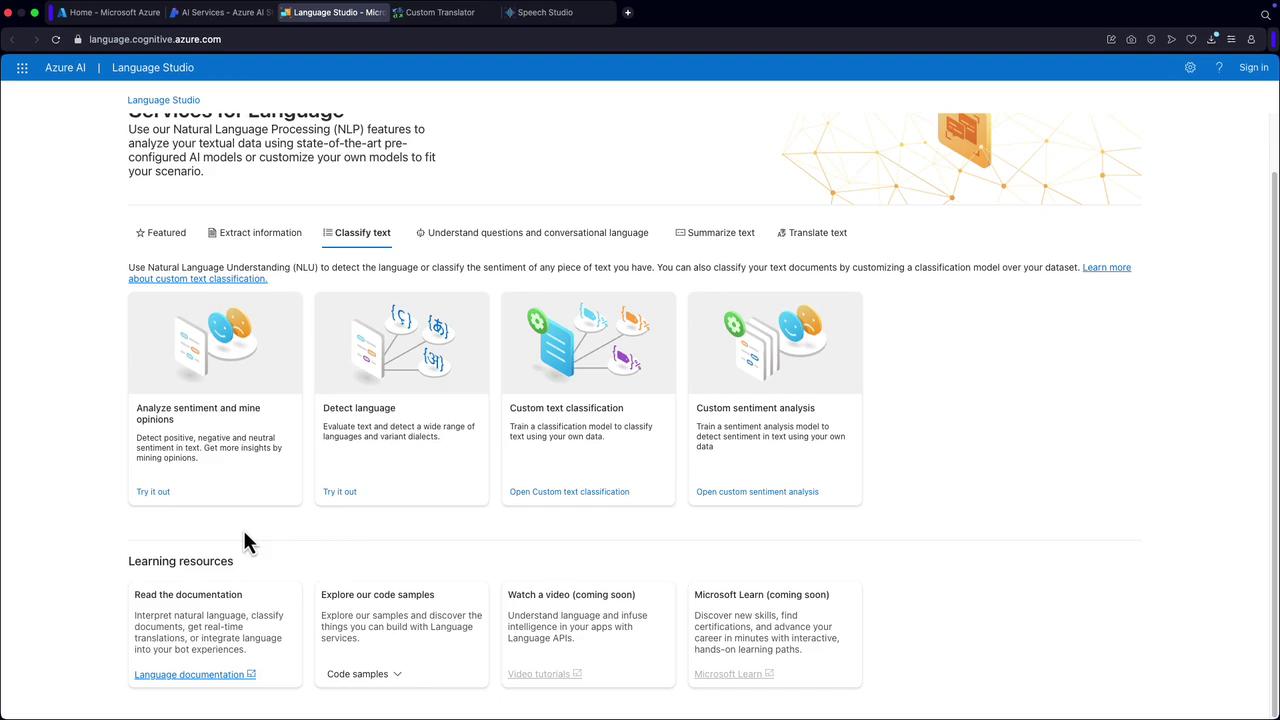
:::note Important Users with an Azure subscription benefit from additional features and fewer usage limitations compared to the free trial. For instance, during the free trial, speech recordings for pronunciation assessment are limited to five seconds. :::

You are encouraged to experiment with the lab exercises to gain hands-on experience with these powerful resources.

Next Steps
Now that you have an in-depth look at Azure’s NLP, Speech, and Translator services, it’s time to explore Azure AI Studio further. Leveraging these tools, you can build intelligent, multilingual applications that engage users effectively through both text and speech.
Happy exploring!
Watch Video
Watch video content